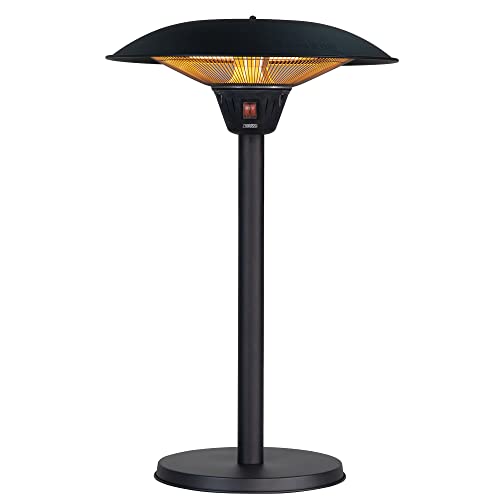How to Choose a Patio Heat Lamp Electric
When it comes to heating your patio, you've got many options. Electric heaters are more efficient than propane models which require fueling. They can be heated in a matter of minutes by pressing a button, or flicking the switch.
They don't emit gasses which could pose an health risk. Some offer adjustable heat settings for varying distances.
electric patio heater hanging of Heater
You can relax outside well into the evening and all through the year with the proper patio heater. Patio heaters are available in many different types that include freestanding propane or natural gas models and ceiling or wall-mounted electric radiant heaters. Your choice is contingent on the dimensions of your space, your power source and individual preferences.
The majority of patio heaters are powered by electricity or liquid gas, or natural, and emit heat via convection and radiant heating. visit the next post of heat is measured in watts and can be converted to British thermal units (BTUs) for comparison. Certain models come with adjustable temperature settings that give you more flexibility.
A patio heat lamp combines a burner on top of a pole with a perforated screen that reflects the flames and radiates the heat downwards to warm furniture, people and other objects. Some come with a reflector atop the burner that can be silvered to cut down the amount of heat lost upwards.
The most common kind of patio heater is a gas patio heater, is often seen in outdoor seating areas of bars and restaurants since they generate a lot of heat quickly and spread it evenly in all directions. They are great for warming multiple tables. These heaters are portable and run off propane tanks or plumbed into your natural gas line, with the latter providing greater convenience and lower initial installation costs but they require ongoing expenses for fuel.
A increasing number of homes are outfitted with natural gas lines, making them the perfect solution for those who prefer to use a gas-powered patio heater. They are easy to install, but require a dedicated and functioning gas line to function in a safe manner. There are portable natural gas heaters with extension hoses that can assist in overcoming this limitation however they can also pose a tripping risk and an additional fire danger when not being used.
Safety
Most electric patio heaters are suitable for use in covered areas since they allow the heat to radiate outward instead of upwards towards things that ignite, like the roof. However, they're not designed for use under an open roof; the heater must be installed at least 18" from the walls adjacent to it or 6" from the ceiling to avoid fire hazards.

Patio heaters made of propane and gas are usually suitable for use in enclosed areas that have an enduring cover specifically designed for use in open air. The covers are typically made of fire-retardant fabric and have an open roof that can be closed. These kinds of patio heaters are prone to safety concerns related to the flames and fumes they produce. They should be located away from flammable objects, such as curtains and chairs.
Follow the safety and instructions measures of the manufacturer when installing a patio heater or patio heat lamp. Select a heater that has been awarded UL and CSA safety certifications. Also, be sure to read the user's instruction manual thoroughly. Be extra careful when it comes to pets and children, and make sure the heater is not within their reach when it's running. Some patio heaters that stand on their own, such as EUROM's, come with an automatic tipping safety that shuts off the device when it falls.
If your patio heater is connected to a natural-gas line, it is recommended to examine it regularly and be sure to have it tested by a licensed professional to identify leaks. If visit the next post has to be replaced, make sure to hire an authorized plumber. A professional will be able to determine if the line has been properly routed or should be run through an underground pipe. A professional can also ensure that the patio heater is connected to an outlet that is GFCI-rated (ground fault circuit interruptioner) to guard against electric fires and shocks.
Installation
The height at which a patio heater is placed affects the amount of heat it can radiate into the space. It is crucial that the heater is placed in a safe distance from the surface such as plastic that can deform, as well as wood, which can get too hot. Depending on the model of the heater you may choose to place it on a wall or a structure using conventional mounting brackets. Some models feature a soft starter that lowers the current at the highest level to safeguard your circuits.
